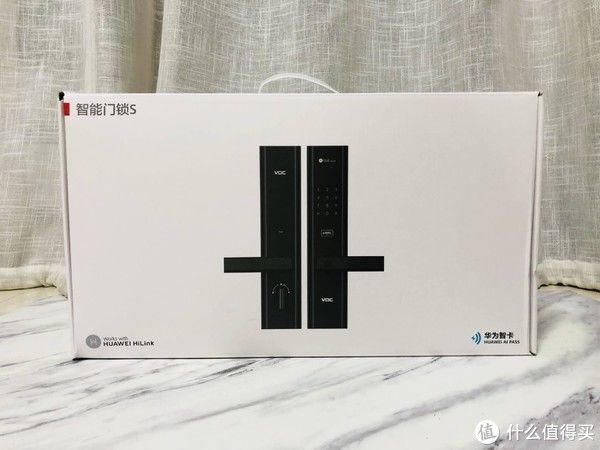еҶІеӨ©йҰҷйҳөйҖҸй•ҝе®үпјҢж»ЎеҹҺе°ҪеёҰй»„йҮ‘з”ІгҖӮиҝҷзҜҮж–Үз« дё»иҰҒи®Іиҝ°Android еӣӣеӨ§з»„件Service дҪҝз”Ёзӣёе…ізҡ„зҹҘиҜҶпјҢеёҢжңӣиғҪдёәдҪ жҸҗдҫӣеё®еҠ©гҖӮ
дёҖ. Service д»Ӣз»ҚServiceеұһдәҺandroidеӣӣеӨ§з»„件д№ӢдёҖпјҢеңЁеҫҲеӨҡең°ж–№з»Ҹеёёиў«з”ЁеҲ°гҖӮејҖеҗҜServiceжңүдёӨз§ҚдёҚеҗҢзҡ„ж–№ејҸпјҡstartServiceе’ҢbindServiceгҖӮдёҚеҗҢзҡ„ејҖеҗҜж–№ејҸпјҢServiceжү§иЎҢзҡ„з”ҹе‘Ҫе‘Ёжңҹж–№жі•д№ҹдёҚеҗҢгҖӮ
еҲҶ
жҳҫзӨә/йҡҗзӨәи°ғз”Ё пјҢдҪҶжҳҜе®ҳзҪ‘жҺЁиҚҗз”ЁжҳҫејҸзҡ„ж–№ејҸеҗҜеҠЁServiceгҖӮдёӢйқў serviceдҪҝз”Ё з”Ёзҡ„е°ұжҳҜжҳҫзӨәи°ғз”ЁпјӣжіЁж„ҸдәӢйЎ№з”Ёзҡ„е°ұжҳҜйҡҗзӨәи°ғз”ЁпјҢеңЁ5.0зі»з»ҹдёҠйҡҗзӨәи°ғз”ЁдјҡжҠҘй”ҷгҖӮжүҖд»ҘиҝҷйҮҢеҸӘд»Ӣз»ҚдҪҝз”ЁжҳҫзӨәи°ғз”ЁгҖӮ
дёҚиғҪеҶҚserviceйҮҢеҒҡиҖ—ж—¶ж“ҚдҪңпјҢеҗҰеҲҷANRпјӣйңҖиҰҒејҖиҫҹеӯҗзәҝзЁӢиҝӣиЎҢиҖ—ж—¶ж“ҚдҪңеӨ„зҗҶгҖӮ
дәҢ.Service дҪҝз”Ё
1.startServiceдҪҝз”ЁгҖӮ
Intent intent = new Intent(this, TestService.class);
Log.w(Tag, "activity====еҗҜеҠЁжңҚеҠЎ");
startService(intent);
жү§иЎҢж•Ҳжһңпјҡ

ж–Үз« еӣҫзүҮ
Log.w(Tag, "activity====еҒңжӯўжңҚеҠЎ"); stopService(intent);
жү§иЎҢж•Ҳжһңпјҡ

ж–Үз« еӣҫзүҮ
2.bindServiceз»‘е®ҡ.
private class MyConnection implements ServiceConnection { @Override public void onServiceConnected(ComponentName name, IBinder service) { //еҸӘжңүеҪ“жҲ‘们иҮӘе·ұеҶҷзҡ„MyServiceзҡ„onBindж–№жі•иҝ”еӣһеҖјдёҚдёәnullж—¶пјҢжүҚдјҡиў«и°ғз”Ё Log.e("call", "onServiceConnected"); }@Override public void onServiceDisconnected(ComponentName name) { // иҝҷдёӘж–№жі•еҸӘжңүеҮәзҺ°ејӮеёёж—¶жүҚдјҡи°ғз”ЁпјҢжңҚеҠЎеҷЁжӯЈеёёйҖҖеҮәдёҚдјҡи°ғз”ЁгҖӮ Log.e("call", "onServiceDisconnected"); } }
Log.w(Tag, "activity====з»‘е®ҡжңҚеҠЎ");
MyConnection conn = new MyConnection(); //第дёҖдёӘеҸӮж•°пјҡIntentж„Ҹеӣҫ // 第дәҢдёӘеҸӮж•°пјҡжҳҜдёҖдёӘжҺҘеҸЈпјҢйҖҡиҝҮиҝҷдёӘжҺҘеҸЈжҺҘ收жңҚеҠЎејҖеҗҜжҲ–иҖ…еҒңжӯўзҡ„ж¶ҲжҒҜпјҢ并且иҝҷдёӘеҸӮж•°дёҚиғҪдёәnull // 第дёүдёӘеҸӮж•°пјҡејҖеҗҜжңҚеҠЎж—¶зҡ„ж“ҚдҪңпјҢBIND_AUTO_CREATEд»ЈиЎЁиҮӘеҠЁеҲӣе»әservice bindService(service, conn, BIND_AUTO_CREATE); bindService(intent, conn, BIND_AUTO_CREATE);
жү§иЎҢж•Ҳжһңпјҡ

ж–Үз« еӣҫзүҮ
Log.w(Tag, "activity====и§Јз»‘жңҚеҠЎ");
unbindService(conn);
жү§иЎҢж•Ҳжһңпјҡ

ж–Үз« еӣҫзүҮ
3.еҢәеҲ«пјҡ
д»ҘдёӢж‘ҳиҮӘзҪ‘з»ң,еҗҺз»ӯйӘҢиҜҒпјҡ
жңҚеҠЎдёҚиғҪиҮӘе·ұиҝҗиЎҢпјҢйңҖиҰҒйҖҡиҝҮи°ғз”ЁContext.startService()жҲ–Context.bindService()ж–№жі•еҗҜеҠЁжңҚеҠЎгҖӮиҝҷдёӨдёӘж–№жі•йғҪеҸҜд»ҘеҗҜеҠЁServiceпјҢдҪҶжҳҜе®ғ们зҡ„дҪҝз”ЁеңәеҗҲжңүжүҖдёҚеҗҢгҖӮ
дҪҝз”ЁstartService()ж–№жі•еҗҜз”ЁжңҚеҠЎпјҢи°ғз”ЁиҖ…дёҺжңҚеҠЎд№Ӣй—ҙжІЎжңүе…іиҝһпјҢеҚідҪҝи°ғз”ЁиҖ…йҖҖеҮәдәҶпјҢжңҚеҠЎд»Қ然иҝҗиЎҢгҖӮдҪҝз”ЁbindService()ж–№жі•еҗҜз”ЁжңҚеҠЎпјҢи°ғз”ЁиҖ…дёҺжңҚеҠЎз»‘е®ҡеңЁдәҶдёҖиө·пјҢи°ғз”ЁиҖ…дёҖж—ҰйҖҖеҮәпјҢжңҚеҠЎд№ҹе°ұз»ҲжӯўпјҢеӨ§жңүвҖңдёҚжұӮеҗҢж—¶з”ҹпјҢеҝ…йЎ»еҗҢж—¶жӯ»вҖқзҡ„зү№зӮ№гҖӮ
еҰӮжһңжү“з®—йҮҮз”ЁContext.startService()ж–№жі•еҗҜеҠЁжңҚеҠЎпјҢеңЁжңҚеҠЎжңӘиў«еҲӣе»әж—¶пјҢзі»з»ҹдјҡе…Ҳи°ғз”ЁжңҚеҠЎзҡ„onCreate()ж–№жі•пјҢжҺҘзқҖи°ғз”ЁonStart()ж–№жі•гҖӮеҰӮжһңи°ғз”ЁstartService()ж–№жі•еүҚжңҚеҠЎе·Із»Ҹиў«еҲӣе»әпјҢеӨҡж¬Ўи°ғз”ЁstartService()方法并дёҚдјҡеҜјиҮҙеӨҡж¬ЎеҲӣе»әжңҚеҠЎпјҢдҪҶдјҡеҜјиҮҙеӨҡж¬Ўи°ғз”ЁonStart()ж–№жі•гҖӮйҮҮз”ЁstartService()ж–№жі•еҗҜеҠЁзҡ„жңҚеҠЎпјҢеҸӘиғҪи°ғз”ЁContext.stopService()ж–№жі•з»“жқҹжңҚеҠЎпјҢжңҚеҠЎз»“жқҹж—¶дјҡи°ғз”ЁonDestroy()ж–№жі•гҖӮ
еҰӮжһңжү“з®—йҮҮз”ЁContext.bindService()ж–№жі•еҗҜеҠЁжңҚеҠЎпјҢеңЁжңҚеҠЎжңӘиў«еҲӣе»әж—¶пјҢзі»з»ҹдјҡе…Ҳи°ғз”ЁжңҚеҠЎзҡ„onCreate()ж–№жі•пјҢжҺҘзқҖи°ғз”ЁonBind()ж–№жі•гҖӮиҝҷдёӘж—¶еҖҷи°ғз”ЁиҖ…е’ҢжңҚеҠЎз»‘е®ҡеңЁдёҖиө·пјҢи°ғз”ЁиҖ…йҖҖеҮәдәҶпјҢзі»з»ҹе°ұдјҡе…Ҳи°ғз”ЁжңҚеҠЎзҡ„onUnbind()ж–№жі•пјҢжҺҘзқҖи°ғз”ЁonDestroy()ж–№жі•гҖӮеҰӮжһңи°ғз”ЁbindService()ж–№жі•еүҚжңҚеҠЎе·Із»Ҹиў«з»‘е®ҡпјҢеӨҡж¬Ўи°ғз”ЁbindService()方法并дёҚдјҡеҜјиҮҙеӨҡж¬ЎеҲӣе»әжңҚеҠЎеҸҠз»‘е®ҡ(д№ҹе°ұжҳҜиҜҙonCreate()е’ҢonBind()方法并дёҚдјҡиў«еӨҡж¬Ўи°ғз”Ё)гҖӮеҰӮжһңи°ғз”ЁиҖ…еёҢжңӣдёҺжӯЈеңЁз»‘е®ҡзҡ„жңҚеҠЎи§ЈйҷӨз»‘е®ҡпјҢеҸҜд»Ҙи°ғз”ЁunbindService()ж–№жі•пјҢи°ғз”ЁиҜҘж–№жі•д№ҹдјҡеҜјиҮҙзі»з»ҹи°ғз”ЁжңҚеҠЎзҡ„onUnbind()--> onDestroy()ж–№жі•гҖӮ
дёү.Service жіЁж„ҸдәӢйЎ№пјҡеңЁ5.0зі»з»ҹдёҠдҪҝз”ЁеҰӮдёӢж–№ејҸstartжҲ–иҖ…bindеҗҜеҠЁserviceж—¶еҖҷпјҡ
Intent intent = new Intent(); intent.setAction("com.example.user.firstapp.FIRST_SERVICE"); bindService(intent,coon,Service.BIND_AUTO_CREATE);
startService(intent);

ж–Үз« еӣҫзүҮ
android 5.0дёҠпјҢжҠҘй”ҷпјҡIllegalArgumentException: Service Intent must be explicit
еҺҹеӣ жҳҜпјҡAndroid5.0дёӯserviceзҡ„intentдёҖе®ҡиҰҒжҳҫжҖ§еЈ°жҳҺпјҒпјҒпјҒ
еӣӣ.йҷ„дёҠж ёеҝғactivityд»Јз Ғпјҡ
package com.example.hp.testapp; import android.content.ComponentName; import android.content.Intent; import android.content.ServiceConnection; import android.os.IBinder; import android.support.v7.app.AppCompatActivity; import android.os.Bundle; import android.util.Log; import android.view.View; import android.widget.TextView; import com.example.hp.testapp.service.TestService; import org.w3c.dom.Text; public class MainActivity extends AppCompatActivity implements View.OnClickListener {private String Tag = "TestServiceTag"; private TextView tv_btn_start; private TextView tv_btn_stop; private TextView tv_btn_bind; private TextView tv_btn_unbind; Intent intent; MyConnection conn; @Override protected void onCreate(Bundle savedInstanceState) { super.onCreate(savedInstanceState); setContentView(R.layout.activity_main); intent = new Intent(this, TestService.class); conn = new MyConnection(); initView(); initListener(); }private void initView() { tv_btn_start = (TextView) findViewById(R.id.tv_btn_start); tv_btn_stop = (TextView) findViewById(R.id.tv_btn_stop); tv_btn_bind = (TextView) findViewById(R.id.tv_btn_bind); tv_btn_unbind = (TextView) findViewById(R.id.tv_btn_unbind); }private void initListener() { tv_btn_start.setOnClickListener(this); tv_btn_stop.setOnClickListener(this); tv_btn_bind.setOnClickListener(this); tv_btn_unbind.setOnClickListener(this); }@Override public void onClick(View view) { switch (view.getId()) { case R.id.tv_btn_start: /** * еҗҜеҠЁжңҚеҠЎ */ Log.w(Tag, "activity====еҗҜеҠЁжңҚеҠЎ"); startService(intent); break; case R.id.tv_btn_stop: /** * еҒңжӯўжңҚеҠЎ */ Log.w(Tag, "activity====еҒңжӯўжңҚеҠЎ"); stopService(intent); break; case R.id.tv_btn_bind: /** * з»‘е®ҡжңҚеҠЎ */ Log.w(Tag, "activity====з»‘е®ҡжңҚеҠЎ"); //第дёҖдёӘеҸӮж•°пјҡIntentж„Ҹеӣҫ // 第дәҢдёӘеҸӮж•°пјҡжҳҜдёҖдёӘжҺҘеҸЈпјҢйҖҡиҝҮиҝҷдёӘжҺҘеҸЈжҺҘ收жңҚеҠЎејҖеҗҜжҲ–иҖ…еҒңжӯўзҡ„ж¶ҲжҒҜпјҢ并且иҝҷдёӘеҸӮж•°дёҚиғҪдёәnull // 第дёүдёӘеҸӮж•°пјҡејҖеҗҜжңҚеҠЎж—¶зҡ„ж“ҚдҪңпјҢBIND_AUTO_CREATEд»ЈиЎЁиҮӘеҠЁеҲӣе»әservice bindService(service, conn, BIND_AUTO_CREATE); bindService(intent, conn, BIND_AUTO_CREATE); break; case R.id.tv_btn_unbind: /** * и§Јз»‘жңҚеҠЎ */ Log.w(Tag, "activity====и§Јз»‘жңҚеҠЎ"); if (conn != null) { unbindService(conn); } default: break; } }@Override protected void onStart() { Log.w(Tag, "activity====onStart"); super.onStart(); }@Override protected void onRestart() { Log.w(Tag, "activity====onRestart"); super.onRestart(); }@Override public void onStateNotSaved() { Log.w(Tag, "activity====onStateNotSaved"); super.onStateNotSaved(); }@Override protected void onResume() { Log.w(Tag, "activity====onResume"); super.onResume(); }@Override protected void onPause() { Log.w(Tag, "activity====onPause"); super.onPause(); }@Override protected void onStop() { Log.w(Tag, "activity====onStop"); super.onStop(); }@Override protected void onDestroy() { Log.w(Tag, "activity====onDestroy"); super.onDestroy(); }private class MyConnection implements ServiceConnection { @Override public void onServiceConnected(ComponentName name, IBinder service) { //еҸӘжңүеҪ“жҲ‘们иҮӘе·ұеҶҷзҡ„MyServiceзҡ„onBindж–№жі•иҝ”еӣһеҖјдёҚдёәnullж—¶пјҢжүҚдјҡиў«и°ғз”Ё Log.e("call", "onServiceConnected"); }@Override public void onServiceDisconnected(ComponentName name) { // иҝҷдёӘж–№жі•еҸӘжңүеҮәзҺ°ејӮеёёж—¶жүҚдјҡи°ғз”ЁпјҢжңҚеҠЎеҷЁжӯЈеёёйҖҖеҮәдёҚдјҡи°ғз”ЁгҖӮ Log.e("call", "onServiceDisconnected"); } }}
гҖҗAndroid еӣӣеӨ§з»„件Service дҪҝз”ЁгҖ‘
жҺЁиҚҗйҳ…иҜ»
- AndroidжөӢиҜ•пјҲLocal еҚ•е…ғжөӢиҜ•пјү
- AndroidжөӢиҜ•пјҲUI Automator иҮӘеҠЁеҢ–жөӢиҜ•пјү
- 20165219第4ж¬Ўе®һйӘҢгҖҠAndroidзЁӢеәҸи®ҫи®ЎгҖӢе®һйӘҢжҠҘе‘Ҡ
- idea дёҘйҮҚ: Error configuring application listener of class org.springframework.web.context.Context еҗҺйқўзңҒ
- Androidзі»з»ҹеҗҜеҠЁжөҒзЁӢ
- Android TintзқҖиүІдёҺеё§еҠЁз”»з»“еҗҲ
- зҘһеҘҮзҡ„apply
- AndroidдёӯPaintзҡ„дёҖдәӣдҪҝз”Ёеҝғеҫ—и®°еҪ•
- AndroidдёӯEnumпјҲжһҡдёҫпјүзҡ„дҪҝз”Ё











